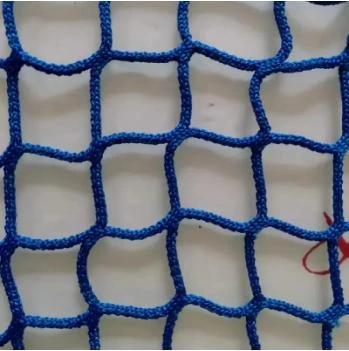-
 Afrikaans
Afrikaans -
 Albanian
Albanian -
 Amharic
Amharic -
 Arabic
Arabic -
 Armenian
Armenian -
 Azerbaijani
Azerbaijani -
 Basque
Basque -
 Belarusian
Belarusian -
 Bengali
Bengali -
 Bosnian
Bosnian -
 Bulgarian
Bulgarian -
 Catalan
Catalan -
 Cebuano
Cebuano -
 China
China -
 Corsican
Corsican -
 Croatian
Croatian -
 Czech
Czech -
 Danish
Danish -
 Dutch
Dutch -
 English
English -
 Esperanto
Esperanto -
 Estonian
Estonian -
 Finnish
Finnish -
 French
French -
 Frisian
Frisian -
 Galician
Galician -
 Georgian
Georgian -
 German
German -
 Greek
Greek -
 Gujarati
Gujarati -
 Haitian Creole
Haitian Creole -
 hausa
hausa -
 hawaiian
hawaiian -
 Hebrew
Hebrew -
 Hindi
Hindi -
 Miao
Miao -
 Hungarian
Hungarian -
 Icelandic
Icelandic -
 igbo
igbo -
 Indonesian
Indonesian -
 irish
irish -
 Italian
Italian -
 Japanese
Japanese -
 Javanese
Javanese -
 Kannada
Kannada -
 kazakh
kazakh -
 Khmer
Khmer -
 Rwandese
Rwandese -
 Korean
Korean -
 Kurdish
Kurdish -
 Kyrgyz
Kyrgyz -
 Lao
Lao -
 Latin
Latin -
 Latvian
Latvian -
 Lithuanian
Lithuanian -
 Luxembourgish
Luxembourgish -
 Macedonian
Macedonian -
 Malgashi
Malgashi -
 Malay
Malay -
 Malayalam
Malayalam -
 Maltese
Maltese -
 Maori
Maori -
 Marathi
Marathi -
 Mongolian
Mongolian -
 Myanmar
Myanmar -
 Nepali
Nepali -
 Norwegian
Norwegian -
 Norwegian
Norwegian -
 Occitan
Occitan -
 Pashto
Pashto -
 Persian
Persian -
 Polish
Polish -
 Portuguese
Portuguese -
 Punjabi
Punjabi -
 Romanian
Romanian -
 Russian
Russian -
 Samoan
Samoan -
 Scottish Gaelic
Scottish Gaelic -
 Serbian
Serbian -
 Sesotho
Sesotho -
 Shona
Shona -
 Sindhi
Sindhi -
 Sinhala
Sinhala -
 Slovak
Slovak -
 Slovenian
Slovenian -
 Somali
Somali -
 Spanish
Spanish -
 Sundanese
Sundanese -
 Swahili
Swahili -
 Swedish
Swedish -
 Tagalog
Tagalog -
 Tajik
Tajik -
 Tamil
Tamil -
 Tatar
Tatar -
 Telugu
Telugu -
 Thai
Thai -
 Turkish
Turkish -
 Turkmen
Turkmen -
 Ukrainian
Ukrainian -
 Urdu
Urdu -
 Uighur
Uighur -
 Uzbek
Uzbek -
 Vietnamese
Vietnamese -
 Welsh
Welsh -
 Bantu
Bantu -
 Yiddish
Yiddish -
 Yoruba
Yoruba -
 Zulu
Zulu
commercial bird netting
The Importance of Commercial Bird Netting
In an increasingly industrialized world, protecting crops is paramount for farmers and businesses alike. One effective solution to tackle the persistent problem of birds damaging agricultural produce is commercial bird netting. This innovative method has gained substantial attention in recent years due to its practicality and effectiveness.
Birds can be beautiful creatures that enrich our ecosystem, but they also pose significant challenges to agriculture. With their insatiable appetites, birds can devastate fruit crops, seeds, and ornamental plants, leading to severe financial losses for farmers. According to studies, certain bird species can consume up to 20% of the total crop yield, translating to millions of dollars in lost revenue annually. Consequently, finding an effective means of deterring these pests without harming them is essential. This is where commercial bird netting comes into play.
Commercial bird netting is a physical barrier designed to protect crops from birds. Typically made from durable, lightweight materials such as polyethylene or nylon, these nets come in various mesh sizes to cater to different types of crops and bird species. The design is engineered to be both effective and unobtrusive, allowing sunlight and rain to penetrate while preventing birds from accessing the plants underneath.
The application of bird netting is versatile and can be used in a range of agricultural operations from orchards and vineyards to nurseries and seedbeds. For instance, fruit growers often utilize bird netting to shield their berries or cherries from flocks of starlings or blackbirds, which are known for their fruit-picking habits. In doing so, growers are able to achieve a higher yield and maintain the quality of their products, ultimately benefiting consumers as well.
commercial bird netting

One of the key advantages of commercial bird netting is its effectiveness in providing a long-term solution. Unlike chemical deterrents or scare tactics, which may require continuous application and can be environmentally harmful, bird netting offers a permanent, eco-friendly solution. The robust materials used in manufacturing bird nets can withstand various weather conditions, making them a reliable choice for protecting crops year after year.
Moreover, the installation of bird nets is generally user-friendly. With the right tools and a bit of time, farmers can set up the nets themselves, reducing the need for professional help. This DIY approach not only saves costs but also allows farmers to customize the installation according to their specific needs.
While the benefits of commercial bird netting are clear, it is essential to choose the right type and size of netting for optimal results. Farmers must consider factors such as the bird species prevalent in their area, the type of crops being protected, and the layout of their fields. Consulting with agricultural specialists or suppliers can provide valuable insights in selecting the appropriate netting for unique needs.
In conclusion, commercial bird netting is an essential tool in modern agriculture, serving as a crucial defense against the ravenous appetite of birds. With its effectiveness, environmental friendliness, and ease of installation, it empowers farmers to protect their crops and maintain their livelihoods. As the demand for sustainable agricultural practices continues to rise, investing in commercial bird netting is a smart choice that paves the way for healthier crops and a more robust agricultural industry. By utilizing this practical solution, we can protect our food sources while respecting the delicate balance of nature.
-
Stainless Steel Mesh SolutionsNewsMay.06,2025
-
Protecting Your Farm with Smart SolutionsNewsMay.06,2025
-
Practical Mesh Solutions for Your Home and GardenNewsMay.06,2025
-
Nylon Mesh SolutionsNewsMay.06,2025
-
Fish Breeding Nets for AquariumsNewsMay.06,2025
-
Essential Mesh Solutions for ConstructionNewsMay.06,2025











